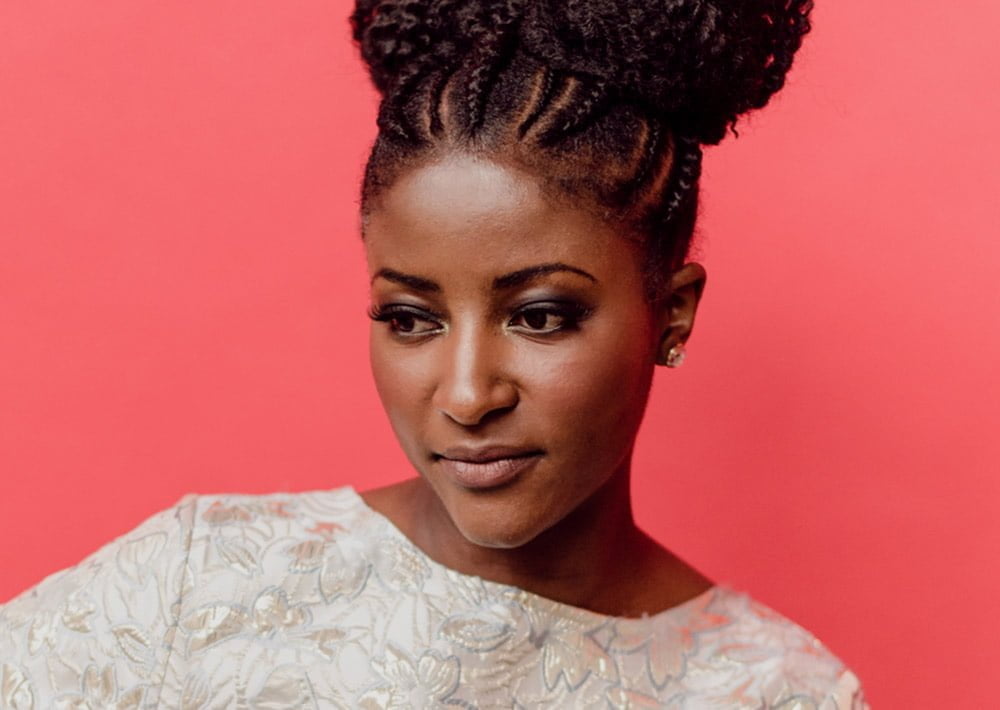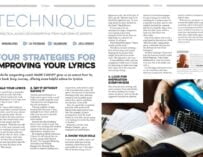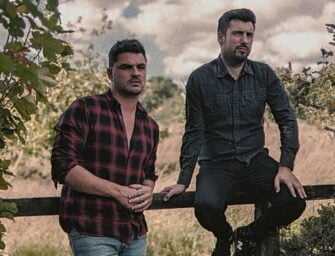
Josephine Oniyama: “I find the easiest way to add space is by turning the middle eight into an instrumental.”
The space between words… Soulful singer-songwriter Josephine Oniyama explains how you can best use wordless passages to enhance your compositions
When I began my journey as a writer, my default was to write page after page, verse after verse of lyrical ideas, packing as many words as possible into every piece. Many of my songs were falling down under the sheer weight of their own lyrical content. It didn’t occur to me back in those early days that the space between words could be an asset to a song, acting as breathing space and a launch pad for new sections.
Instrumentals, solos, riffs, and pauses all act as dynamic and necessary shifts from which to build momentum and, ultimately, add interest. Wordless sections give my songs the structure and contrast that, in the end, makes them more professional and more satisfying for the listener.
First published in Songwriting Magazine Autumn 2022
INSTRUMENTAL SECTIONS
Instrumental sections can be memorable, riff-filled, melodic-driven areas for generating anticipation. Think about The White Stripes’ Seven Nation Army. Large sections of this song are given up to wordless passages. Instead, one of the most memorable riffs in modern music has become the song’s most anticipated section, much to the delight of festival-goers. I’m not saying we all have the guitar prowess of Jack White, but being open to turning off the splurge of words can force a writer to play with riffs and melodies in a way they might not have considered before.
When I was writing my song House Of Mirrors with Ed Harcourt, he had written a wonderful passage of lilting and magical piano in the middle of the piece. On first hearing, my ears told me this was the bridge section, the time to turn the meaning around, introduce new lyrical content and add a little wow factor to the song, yes? No! It didn’t work and all I did was cover up what is a beautiful area of space and slick musicianship added to the composition by Ed’s skilled hand. Instead, the final song has a plot middle section, a brief section with words, and another that opens up the piano and allows Ed to make a dramatic piano run into the final chorus.
ADDING SPACE
I find the easiest way to add space is by turning the middle eight into an instrumental. This is the section where we’d usually find section C in an AB, AB, C, BB structure. It usually introduces a slightly different progression (one of the most straightforward being to use a progression based around the relative minor chord in a major key song). Here, it’s simply a case of stripping out the words, ditching that unusual lyric that you couldn’t use as the tag line, and instead going for the melody jugular.
Having a lead guitarist play around with the existing melodies in the vocal is a great way to forward the momentum without moving too far away. Of course, its also fine to introduce a whole new melody, or get really crunchy and heavy with sounds (if, like mine, your songs tend to be lyrically focused). There’s nothing I like more than playing around with electronic sounds that can get ethereal and hazy to lift spirits before opening up the final chorus or double-chorus ending. This can be a real moment to pause for thought and give the ending sections extra meaning.
USING PERCUSSION
Something that can be a little harder to achieve, but truly special when you do, is adding percussive sections. Have you come up with an incredible beat that’s underpinning the track? Maybe you can give it a moment to open up and breathe? If so, stripping back the lyrics and leaving the beat (perhaps only supported by instruments with chordal quality e.g. synths, organ, acoustic guitars, etc), then adding lots of extra percussive sounds (shakers, tambourines and yes…cow bell), can lift a percussive section to new heights and remind listeners that the beat can be a true source of inspiration and fun. It’s also a lot of fun to do in the studio and replicate on stage.
Adding some tasteful extra fills will also heighten the fascination with the section and make the audience/listeners ready and receptive for when the words come back in.
PAUSE FOR THOUGHT
There is another way to go with these spaces between words. How about no music at all? The humble stop, or pause, can be both dramatic and poignant and add a surprising amount of atmosphere. Think of Whitney Houston and the song I Will Always Love You. That moment after the bridge when everything stops and she comes back in for one of the most dramatic moments in pop ballad history with, “And I………. will always love you.” The pause only lasts for two beats, but wow, how memorable.
Pauses aren’t only for ballads; they can happen in music of all genres and tempos. The idea is that, for a brief beat or two, nothing happens. This can be at the top of a song, in the middle, or at the end. Wherever it goes, what it inevitably does is draw in attention. If you’ve ever used one live, you’ll know that that simple moment of space grabs an audience’s attention instantly. They are therefore, of course, best used right before a really important moment.
Tailing off with some shimmering cymbals, or delicately reducing the vocals as Whitney does before the stop, is a sweet and poignant way to lead into it. Equally, the moment before the pause can be a wild drum-filled affair with heavy guitars or sawing electro sounds. Either way, the idea is that the contrast will create interest, momentum and drama. When the music comes back in, the listeners will be champing at the bit to continue singing along, dancing or drifting away to whatever song you’ve written.
So, don’t be afraid to drop the lyrics and get creative with the space between words. It’s fun and can create special moments of musical joy. It could also help take the pressure off when trying to write lyrical content, because you might find you don’t need quiet as much as you thought.









![Songwriting Credits… best new music playlist [September 2023]](https://www.songwritingmagazine.co.uk/wp-content/uploads/songwriting-credits-september-2023-335x256.jpg)






























Related Articles